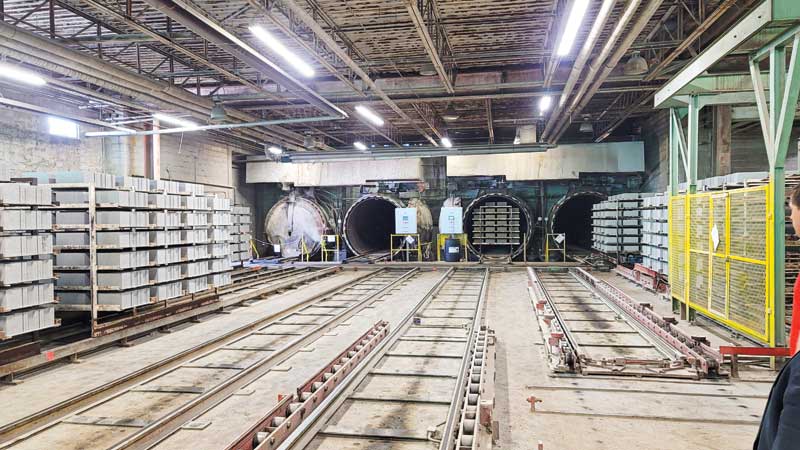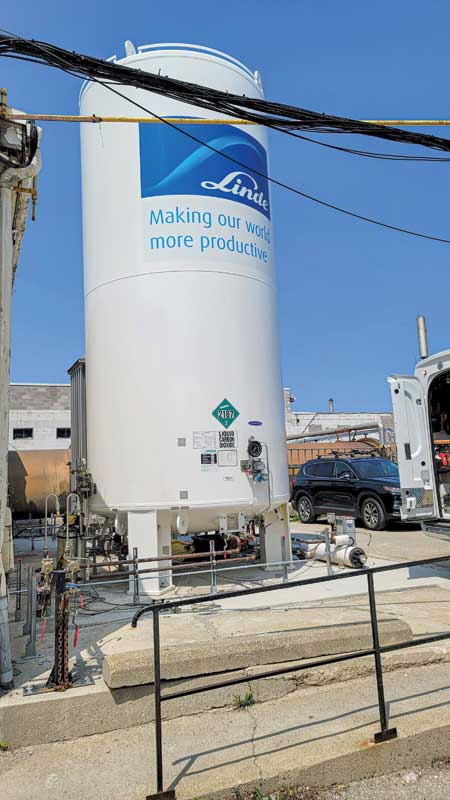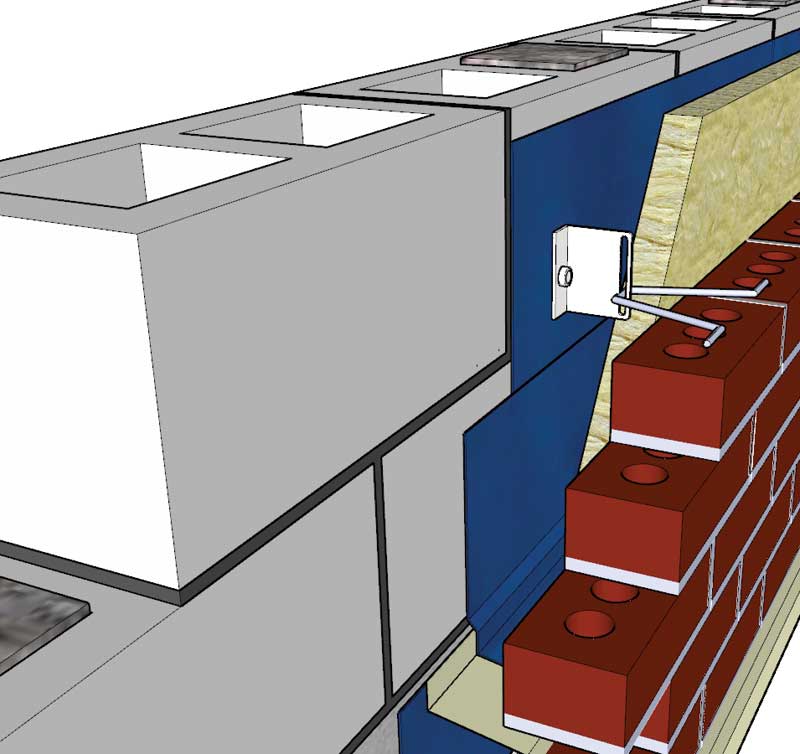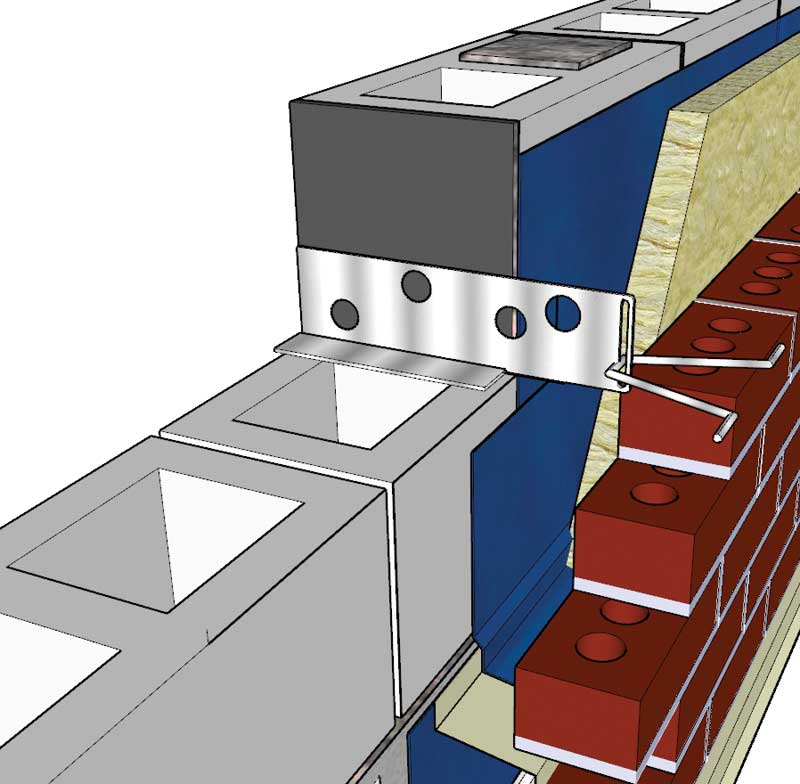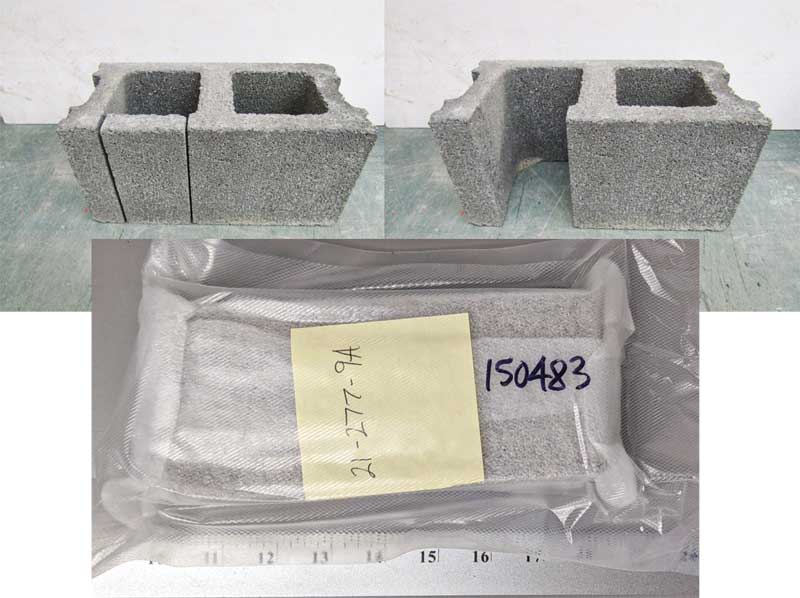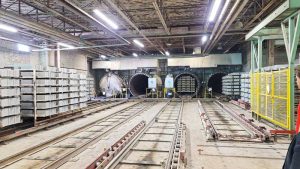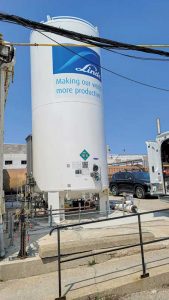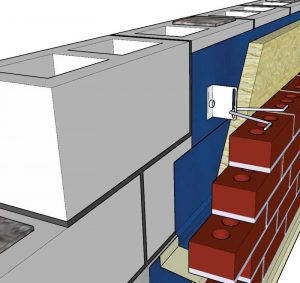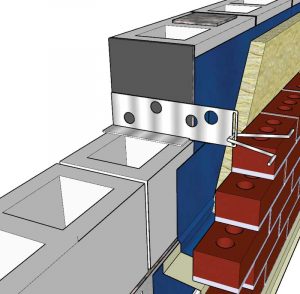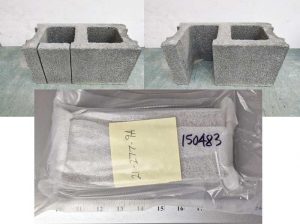Pre-carbonation of concrete masonry products occurs by either using CO2 to cure the units at the time of manufacture or by using cement powder that has been pre-carbonated to manufacture the units. When CO2 is used to cure the units, CO2 sequestered from the atmosphere is introduced into the curing process of autoclaved CMUs. Autoclaved concrete blocks are steam-cured in a high pressurize vessel—it is a process that can easily integrate CO2 into the steam curing process. In Figure 5, an existing autoclaving chamber is in the process of being modified to include CO2 curing into the manufacture of CMUs (Figure 6).
Pre-carbonation typically increases the early strength of the CMUs and reduces shrinkage and defects in the finished units. These higher, early strength gains can allow for producers to reduce their cement loading, further reducing their CO2 footprint.
Pre-carbonation technologies have the potential to reduce CO2 emissions associated with manufacturing concrete blocks, pavers, and segmental retaining walls by up to 35 million tons (31 million tonnes) per year in North America.
Achieving thermal performance and meeting net-zero building envelope targets
Building operations are estimated to contribute 28 percent to GHG emissions.5 Canada’s cold climate results in many days per year that buildings must be heated for occupant comfort and building performance. A thermally efficient building envelope can result in a significant decrease in heat lost through the envelope and corresponding reduction in the heat input from HVAC required to maintain occupant comfort. Even with high-efficiency HVAC systems, a thermally efficient envelope significantly reduces GHG from heat energy.
Canada’s commitment to reduce CO2 emissions has led to a target of net-zero energy (NZE) or passive house requirements for all new buildings by 2030. CMUs can be used to create building envelopes that achieve net-zero energy building requirements and help reduce the carbon footprint from building operations. When trying to achieve a thermally efficient envelope, it is important to ensure accurate thermal values and the latest technologies are being used for the thermal modeling. For example, using surface-mounted brick ties (Figure 7a) rather than embedded brick ties (Figure 7b) can increase the thermal performance of the wall by R-4.2. Currently the online thermal catalogs6 only have thermal values for concrete block backup walls with embedded brick ties.
Knife plate standoffs at the foundation (Figure 8) and at floor levels can also be used to increase the thermal performance of the wall by R-4.
The use of vermiculite or other insulation to fill the empty cores can increase the wall performance by R-4 as well. However, if these details are implemented in the construction, but are not captured by the thermal modeling because a thermal value cannot be readily found by the modeler, additional insulation without benefit will likely result.
The additional insulation, if unnecessary, can be detrimental, as it can increase the embodied carbon of the building by using more material than necessary to achieve the thermal target. It is estimated that 11 percent of CO2 produced globally is by building construction and materials. When the insulation being used is extruded polystyrene (XPS), expanded polystyrene (EPS), or sprayed polyurethane foam (SPF), the impact is amplified. These products are fossil-fuel based, so not always recyclable, and can take years to break down in landfills.



